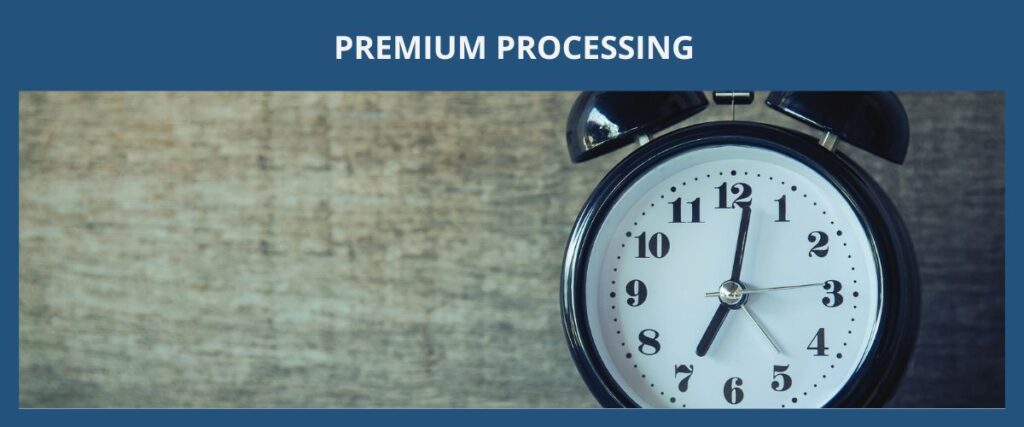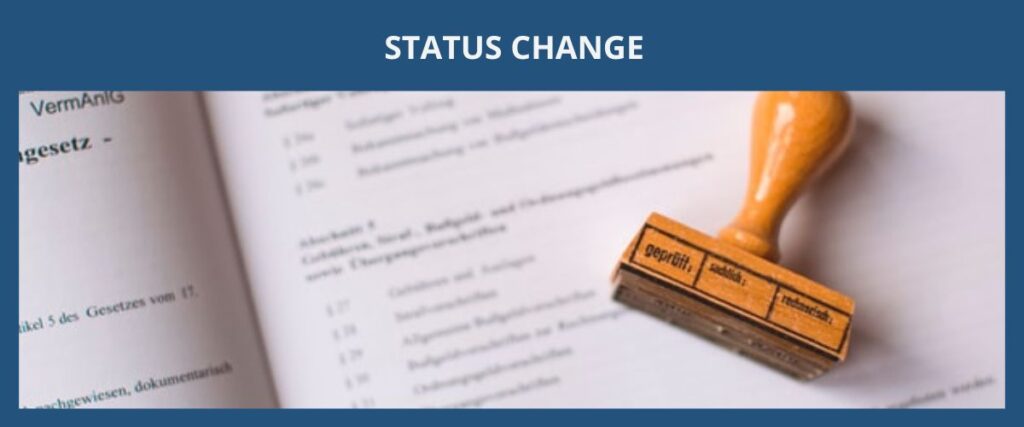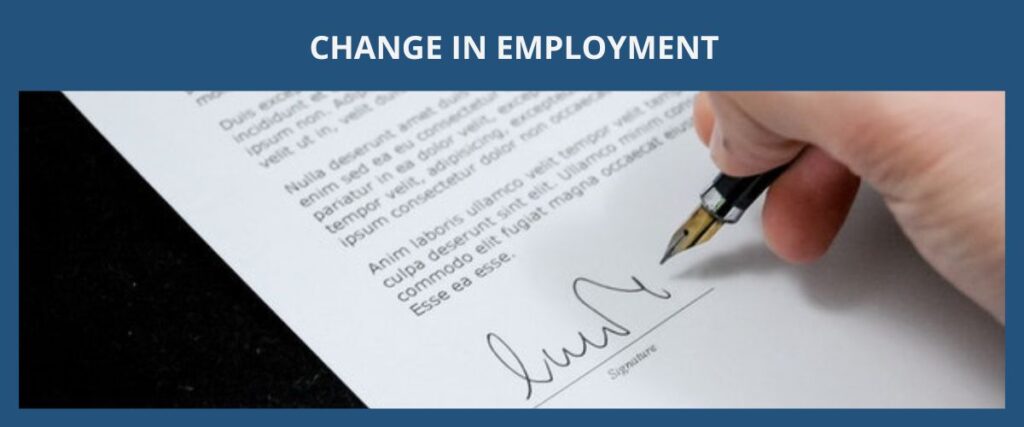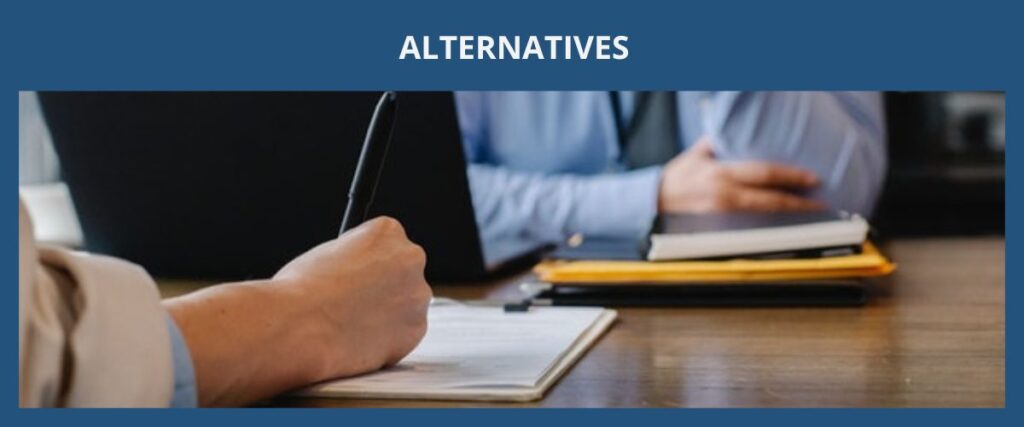The O1A visa is a nonimmigrant (temporary) work visa for persons who have extraordinary ability in the sciences, education, business, or athletics and are coming to the United States to work for a U.S. employer or agent. Persons in the field of athletics can include athletes, coaches, trainers, sail designers, automobile race mechanics…etc.
- 1.
- a.
- 2.
- 3.
- 4.
- 5.
- a.
- b.
- 6.
- 7.
- 8.
- 9.
- a.
- b.
- c.
- d.
- e.
Table of Contents
The qualified O1A visa worker must (1) have extraordinary ability in the sciences, education, business, or athletics and (2) possess sustained national or international acclaim and recognition in their field of expertise.
The original statutory wording for the O1A visa qualified persons can be found in 8 CFR §214.2(o)(ii).
Extraordinary Ability
Extraordinary ability under the O1A visa means that the foreign worker is part of a small percentage of people who have risen to the very top of their field. This usually means that the person with extraordinary ability is already accomplished in their field of expertise and is well-known for their work.
Athletics
The field of athletics under the O1A visa can include chess, competitive ballroom dancing, animal training if the training is for competitive sports such as racing, polo, cutting…etc. The type of workers in the field of athletics under the O1A visa can include athletes, coaches, trainers, sail designers, automobile race mechanics, etc.
It is important to note that a professional athlete and a coach are seen as having different skills sets and are not categorized as being in the same field of expertise. For example, being a legendary baseball player does not mean that the person can automatically qualify for a coaching position under the O1A visa petition.
Unlike the requirements of the H1 visa and L1 visa, J1 visa holders can apply for the O1A visa without fulfilling the two-year home country residency requirement or waiver requirements. However, without a waiver, the O1A visa worker will not be able to change their current J1 visa status to the O1A visa status within the United States and they would be required to return to their home country to go through consular processing.
The initial O1A visa grants a period of stay for up to 3 years depending on the end date submitted by the sponsoring employer or agent. The O1A visa holder is allowed to enter the United States 10 days before the start date and stay an additional 10 days after the end date. However, the O1A worker cannot work in those additional 20 days. There is a 60-day grace period of authorized stay in the United States if the O1A worker’s employment is terminated before the visa end date.
Renewals of the O1A visa (extensions of stay) may be granted for up to 1 year depending on the time needed to finish the initial event or activity. There is no maximum time limit on how long a person can be on an O1A visa status and there is no limit on how many times the O1A visa can be renewed (extended), however, it is affected by how long the O1A worker needs to complete the initial event or activity.
-eng-1024x427.jpg)
The O1A visa has three main requirements that need to be satisfied: evidence must be provided to the USCIS to show that the person (1) has extraordinary ability in the sciences, education, business, or athletics, (2) possesses sustained national or international acclaim and recognition in their field of expertise, and (3) will continue to work in the same area of expertise that was used as the basis to apply for the O1A visa.
There are two ways to prove that the person’s extraordinary ability is nationally or internationally acclaimed: it can be done by either showing (1) the person received a major internationally-recognized award or prize, OR by (2) satisfying at least 3 of 8 criteria listed in 8 CFR §214.2(o)(3)(iii) immigration regulations.
Documents Required for the O1A Work Visa (Science, Education, Business, Athletics)
The evidence provided to the USCIS for the O1A visa must show:
AND
(B) The person received a one-time major internationally-recognized achievement (i.e., Nobel Prize, Olympic Medal, Major League MVP)
OR
(C) The person satisfies at least 3 of the 8 criteria listed below:
*** Any other comparable evidence can be provided if the 8 criteria listed above cannot be readily applied
TLDR: The O1A visa worker would have to meet the requirements of (A) and (B) or (A) and (C), which means that the person must show they will continue to work in the same field of expertise after the issuance of the O1A nonimmigrant visa, and that they either have at least a one-time major internationally-recognized award or prize, or can show proof of their professional recognition by satisfying 3 of the 8 criteria under 8 C.F.R. 214.2(o)(3)(iii) (allows other comparable evidence if the criteria are not applicable).
-eng-1024x427.jpg)
The total time an O1A visa takes is consisted of the processing time for the (1) O1A visa petition (Form I-129) with the USCIS and the (2) visa application (DS-160) at a U.S. consulate or embassy overseas if the person is not already in the United States or is ineligible to do a change of status within the United States.
Factors that influence the O1A visa petition processing time usually include but are not limited to if there was any Request for Evidence (“RFE”) issued, and the caseload of the USCIS service center and the U.S. consulate or embassy.
Premium Processing for Form I-129 (Expedited Service)
A rough estimate for the Form I-129 petition for the O1A visa is around 3 to 4 months. However, a 15-day premium processing (Form I-907) is available for the Form I-129 part of the O1A visa petition. Premium processing is an optional expedited service where the USCIS guarantees that the case will be processed within 15 calendar days (not business days). When a notice of intent to deny (NOID) or a request for evidence (RFE) is issued, a new 15 calendar days will start when the USCIS receives a response from the applicant. If the USCIS fails to process within the time frame, a refund of the service fee will be given and the case will continue to be expedited. Please note that USCIS’s guaranteed response may be an approval notice, denial notice, notice of intent to deny (NOID), request for evidence (RFE), or open an investigation for fraud or misrepresentation.
The current premium processing fee for the O1A visa is $2500 USD and it can be requested when the original petition is submitted to the USCIS or an upgrade to premium processing can be done when the case is pending.

After the USCIS approves the O1A visa petition (Form I-129), the person will then need to change into their O1A visa status. There are 2 ways to change into the O1A visa status: change of status (done in the United States) and consular processing (done outside of the United States).
Change of status is usually for a person who is already in the United States with another valid nonimmigrant visa status and has maintained a lawful visa status throughout their time in the United States. On the other hand, consular processing is for a person who lives outside the United States or for a person who is ineligible to change their status in the United States due to noncompliance of U.S. immigration law (e.g., overstayed on their previous visa status, worked when they did not have valid U.S. work authorization, the visa status they used to enter the United States does not allow them to change into another type of visa status, etc.)
For a person who is residing overseas (outside the United States) or a person who is ineligible for a change of status with the O1A visa petition (Form I-129), consular processing must be done to obtain the O1A visa status. Consular processing involves the person attending an in-person interview at the U.S. consulate or embassy usually in the person’s home country. In some certain circumstances, a person can do consular processing in another country as a “Third Country National.”
After the interview approval at the U.S. consulate or embassy, the person would have to be admitted entry into the United States by the CBP officer at the border (usually at the airport) which means that the person would have to physically enter the United States as the final step for the O1A visa status to be activated.
For a person who is already in the United States with another valid nonimmigrant visa, there are usually two options available to obtain the O1A visa status:
(1) Change of Status: this is the more commonly chosen option where the person states that they would like to change their status without leaving the United States in their O1A visa petition (Form I-129). If the person is eligible (no violations of U.S. immigration laws), then their nonimmigrant visa status will be changed upon the approved employment start date listed in the O1A visa petition. In cases where the person’s change of status request is denied or the person needs to change it into consular processing, an application for action on an approved application or petition (Form I-824) may be required.
(2) Consular Processing: this must be chosen if a person cannot show that they have maintained lawful visa status in the United States or for any other reasons such as the person needs to travel internationally before the O1A visa petition is approved.

A change in employment for the O1A visa worker usually means (1) the person changes to a different employer, (2) the person will work for more than one employer, (3) the person’s employment was involuntarily terminated, or (4) there was a material change in the person’s employment or visa eligibility.
Amended Petition
Additional performance or engagements of the O1A visa worker are allowed without filing an amended O1A visa petition, however, an amended O1A visa petition would be required if there is a material change in the terms and conditions of the O1A visa worker’s employment or in the O1A visa worker’s visa eligibility.
Change in Employer
If the O1A visa worker changes to a new employer, a new O1A visa petition must be filed. If it was an agent that filed the original O1A visa petition, the new employer must file an amended O1A visa petition to request an extension of stay.
Athletes Traded to New Team
For athletes being traded to a new team, their work authorization automatically continues with the new team for an additional 30 days if the new employer files a O1A visa petition for the athlete before the end of that 30-day period. The O1A athlete is permitted to work throughout the time that the new O1A visa petition is pending.
Concurrent Employment
The O1A visa worker can work for more than one employer at the same time, however, all the employers would need to file for a separate O1A visa petition unless it is filed under a U.S. agent.
Early Termination
If the O1A visa worker’s employment ends before their visa status expiration date, the person will have a 60-day grace period (or till their existing expiration date if it comes earlier) to stay in the United States to seek other employment, change their visa status, or take care of affairs before departing the United States. However, the O1A visa worker is not allowed to work during that 60-day grace period.
If the O1A visa worker’s employment was terminated and it was not because the O1A visa worker resigned voluntarily, the sponsoring employer or agent would have an obligation to pay a reasonable transportation cost to the O1A visa worker to return to their last place of residence before coming to the United States.

Dependent family members (spouse and unmarried children under 21 years old) of O1A visa workers are allowed to stay in the United States under the O3 visa status but they are not allowed to work. Studying is allowed for O3 visa holders.
Dual intent visas allow the foreign person to have both an intent to temporarily stay in the United States and an intent to permanently stay in the United States. The intention to permanently stay in the United States can be shown when the foreign person has a pending green card petition with the USCIS or an approved PERM labor certification from the U.S. Department of Labor.
The O1A visa is a dual intent visa which means that it is possible for the person to have a green card (permanent residency) petition pending while still being able to maintain and extend (renew) their O1A visa status in the United States. In comparison, the O2 visa for the foreign support staff of the O1A athletes is not a dual intent visa. The O2 visa requires the foreign person to maintain a residence (home address) overseas that they have no intention in abandoning which means that the foreign person is not allowed to have the intention of staying permanently in the United States and having a pending green card petition will interfere with their eligibility to maintain and extend (or renew) their O2 visa status in the United States. For example, if an O2 visa holder leaves the United States after they have filed a green card petition (which is an intent of permanently staying in the United States) with the USCIS, it would be likely that they will not be allowed to back to the United States with their O2 visa because it is not a dual intent visa and only allows the foreign person to have an intention to temporarily stay in the United States.
The O1A visa allows persons who are nationally or internationally known for having extraordinary ability in their field of expertise (limited to science, education, business, or athletics) to come work temporarily in the United States. The O1A visa is for persons who are already accomplished in their professional career and not for persons who are just starting out. There is a strong emphasis on the O1A visa worker being well-known for their work on a national or international level, which means that the person cannot just be seen as an emerging talent or someone who merely shows promise or potential.

For people who do not qualify for the O1A work visa petition yet and are in the field of science, education or business, the closest alternatives would be filing for an H1b visa petition (Australians can file for E-3 visa petitions) or TN visa petition (for Canadian or Mexicans) to work in the United States. For certain people in the field of business, the alternatives to the O1A visa petition would be to file an L1A visa petition for managers or executives of multinational companies, an L1B visa petition for employees with specialized knowledge of multinational companies that they work for, or an E1 (Treaty Trader) visa petition or an E2 (Treaty Investor) visa petition for business owners or investors. The alternative to an O1A visa for athletes would be to file a P1A visa petition (Internationally Recognized Athlete).
Another possible alternative to filing an O1A visa petition would be to file for a green card petition which is a permanent immigrant visa and not a temporary work visa like the O1A visa. Typically, a person who is qualifiable for an O1A visa would choose to file for an EB1 green card due to the similarities of the standards and requirements between the two visas. For more on green cards gained through work, please read the overview for employment-based green cards.
Unlike the H1B visa, (1) there is no lottery restriction for O1A visas because no limitation is placed on the amount of O1A visas that can be granted in a fiscal year, (2) the O1A visa does not have a prevailing wage requirement (a set minimum wage) because the U.S. Department of Labor is not involved in the process, (3) the O1A visa has no minimum degree or license requirements but it already has a higher standard on who can be qualified on the outset, (4) the O1A visa worker is not required to have a W2 employer-employee relationship with their U.S. sponsoring employer (or agent), and (5) J visa holders who are subject to the 2-year home residency requirement can be eligible for O1A visas but will have to go through consular processing if they do not obtain a waiver to change their status in the United States.
The main difference between the O1A visa and the P1A visa for athletes is that (1) the initial period of stay for the P1A visa can be up to 5 years and the O1A visa can be up to 3 years, and (2) the O1A visa allows the athlete to do more types of work such as attending athletic competitions, coaching, and book writing in the same time frame.
The main difference between a green card and a temporary work visa (such as an H1B visa, L1 visa, O1 visa, P1 visa, TN visa, E3 visa) is that a green card holder can freely change jobs among different employers without needing additional filings or approvals from the U.S. government. Also, unlike temporary work visas, green cards are permanent so there is no set maximum time on how long a green card holder can stay in the United States.
When the O1A visa workers decide that they would like to live in the United States permanently and do not want to be subject to the time limitations or the constant filing requirements to extend (renew) their temporary work visa, the next step for them is to file a green card petition. The EB1 green card petitions are usually used by O1A visa workers because of how similar the standard and requirements are between the two visa categories. Another close alternative would be the EB2 green card petitions under the Schedule A, Group II exceptional ability.
The EB1 green card petitions are one of the fastest ways to obtain an employment-based green card because unlike other employment-based green card categories it does not require a lengthy PERM labor certification and typically does not encounter visa availability backlog issues. The EB1 green card has three subcategories: the (1) EB1a green card for persons that are nationally or internationally recognized as having extraordinary ability in the field of sciences, arts, education, business, or athletics, (2) EB1b green card for professors or researchers who are internationally recognized as outstanding in their academic field, and (3) EB1c green card for executives or managers of multinational companies overseas who are transferring to work in the U.S. office.
Unlike most employment-based visas (such as the O1A visa), the EB1a (Alien of Extraordinary Ability) green card can be self-sponsored (where the person can pay and start the green card petition by themselves) and does not need to be tied to a specific sponsoring U.S. employer.
Furthermore, a person can qualify for an employment-based green card no matter where they are currently residing in the world. There is no pre-requisite as to the person being in some type of nonimmigrant visa status (such as an O1A visa) or having an educational degree from a U.S. school. In other words, a person who does not have a U.S. degree and has never been to the United States can still qualify for an employment-based green card. Thus, even if a person is not in an O1A visa status yet but does have the qualifications for an O1A visa, they can alternatively choose to file for an EB1 green card petition instead.
If you have an O1A work visa (Alien of Extraordinary Ability) immigration question, please fill out our contact us form or send us an email with some basic information about your background and your immigration needs. We will do our best to respond within 48 hours.
How we can help?
Kylie Huang Law’s immigration attorney will help identify whether the O1A visa is the appropriate nonimmigrant visa category for the client’s (or the client’s beneficiary’s) professional background and if there are other visa options for the client (or the client’s beneficiary). We will work closely with our client to prepare a convincing case for their (or it’s) O1A visa petition and we will also strategize on how the O1A visa petition should be presented to achieve the best chances of approval. It is strongly advised and common practice to retain an immigration attorney for an O1A work visa petition due to the complexities in the immigration process and visa requirements.
What does the typical process look like to retain (hire) us?
- Step 1:
- Step 2:
- Step 3:
- Step 4:
- Step 5:
- a.
- b.
- c.
- Step 6:
- Step 7:
- Step 8:
- Fill out the form (with some basic information on what your immigration needs are)
- Sign up and log into the client portal to schedule an appointment online
- Attend scheduled appointment (typically a phone call or zoom meeting)
- Retainment (signing a contract to hire us)
- Start processing case
- Gathering required documents
- Preparing paperwork
- Confirming contents of documents that will be submitted
- Filing the case
- Following up on the status of the case
- Close the case when a final determination is issued
- Step 1:
- Step 2:
- Step 3:
- Step 4:
- Step 5:
- a.
- b.
- c.
- Step 6:
- Step 7:
- Step 8:
- Fill out the form (on what your immigration needs are)
- Sign up and log into the client portal to schedule an appointment
- Attend scheduled appointment (typically a phone call or zoom)
- Retainment (signing a contract to hire us)
- Start processing case
- Gathering required documents
- Preparing paperwork
- Confirming contents of documents that will be submitted
- Filing the case
- Following up on the status of the case
- Close the case when a final determination is issued
- Step 1:
- Step 2:
- Step 3:
- Step 4:
- Step 5:
- a.
- b.
- c.
- Step 6:
- Step 7:
- Step 8:
- Fill out the form (on what your immigration needs are)
- Sign up and log into the client portal to schedule appointment
- Attend scheduled appointment (typically a phone call or zoom)
- Retainment (hire us)
- Start processing case
- Gathering required documents
- Preparing paperwork
- Confirming content of documents that will be submitted
- Filing the case
- Following up on the case status
- Close the case when a final determination is issued
RELATED ARTICLES
- O1A Visa Requirement & Documents
- O1A Visa Checklist
- O Visa Overview (Extraordinary Ability / Achievement)
- O-1B Visa (Extraordinary Ability in Arts & Extraordinary Achievements in Motion Pictures or Television)
- O1B Visa Requirement & Documents
- O1B Arts & O1B MPTV Visa Checklist
- O2 Visa (Essential Support Personnel)
- O2 Visa Checklist
- H Visa Overview
- H1B Visa (Specialty Occupations)
- Employment-Based Green Card Overview
- EB1a Visa (Alien of Extraordinary Ability)
- EB1b Visa (Outstanding Professors and Researchers)
- EB1c Visa (Multinational Manager or Executive)
- P visa Overview (Athlete & Entertainer)
- P1A Visa (Internationally Recognized Athlete)
- P1B Visa (Member of Internationally Recognized Entertainment Group)
- L Visa Overview (Intra-Company Transferee)
- E Visa Overview (Treaty Trader & Investor)
- R1 Visa (Religious Worker)

